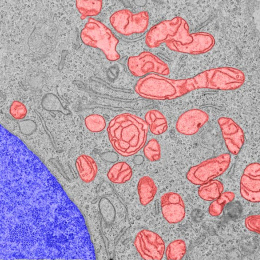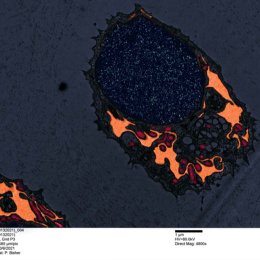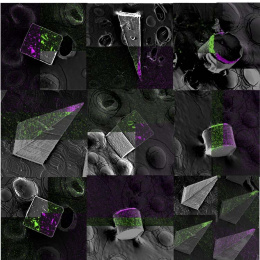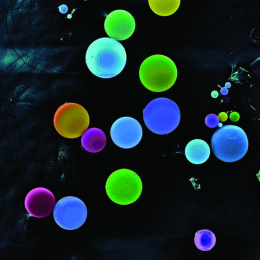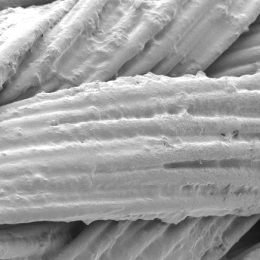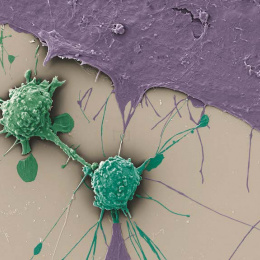DNA-Depleted Mitochondria 3
DNA-Depleted Mitochondria 3
Evgeni Frenkel, Margaret Bisher, David Mankus & Abigail Lytton-Jean
MIT Department of Biology, Whitehead Institute
Mitochondria in our cells are like bacteria because they contain their own DNA, which they need to convert our food to energy, but we can remove this DNA to study their other functions. These mitochondria have unusual “onion” morphology because we have removed their DNA.
Many problems arise when mitochondria lose DNA, but mitochondria have mechanisms to deal with those problems, which we are studying. These mechanisms are always important for maintaining health, but we can see their role more clearly in cases like this when mitochondrial DNA is gone.
We are identifying proteins that are especially important in extreme disease states like the DNA-depleted mitochondria shown in the image.

